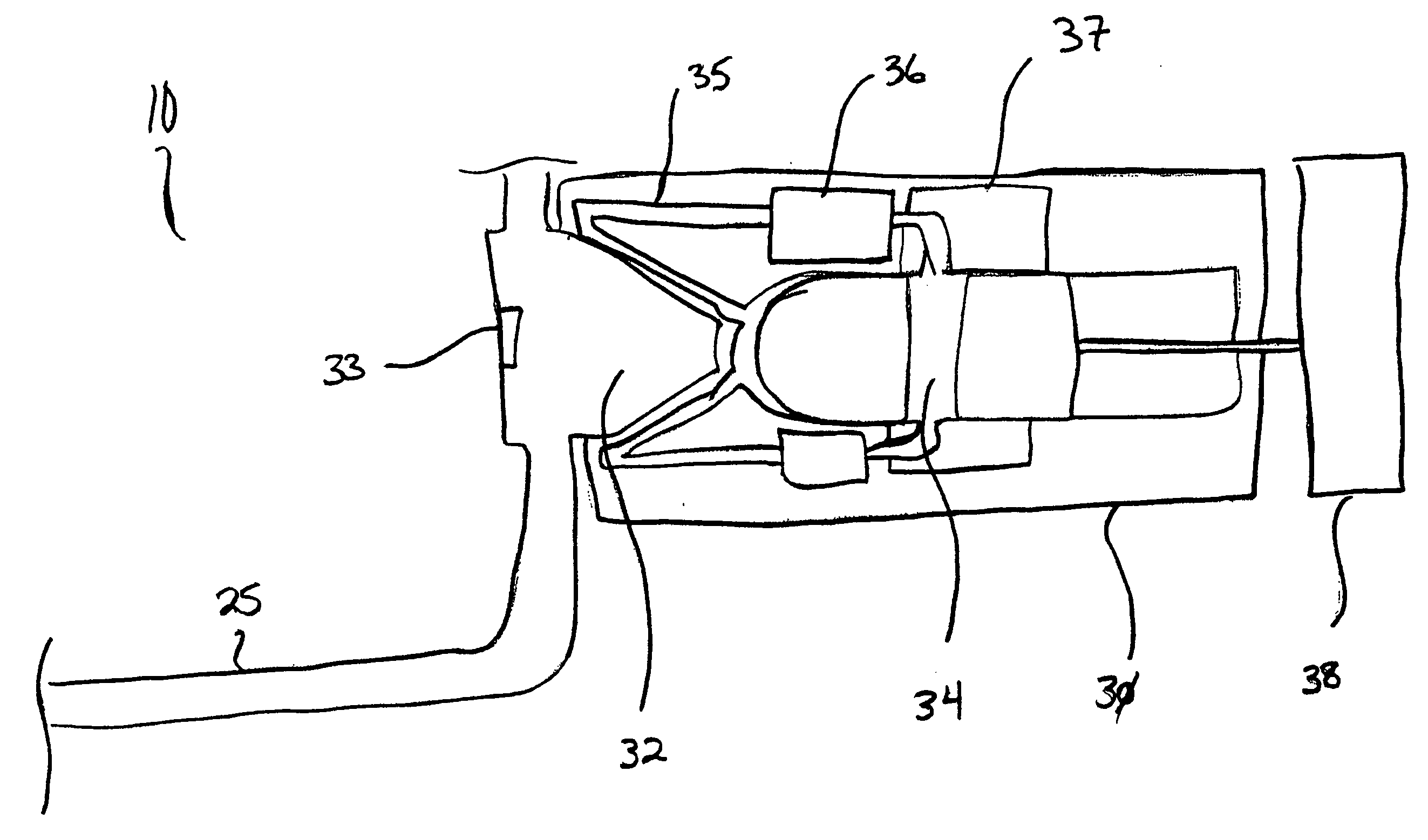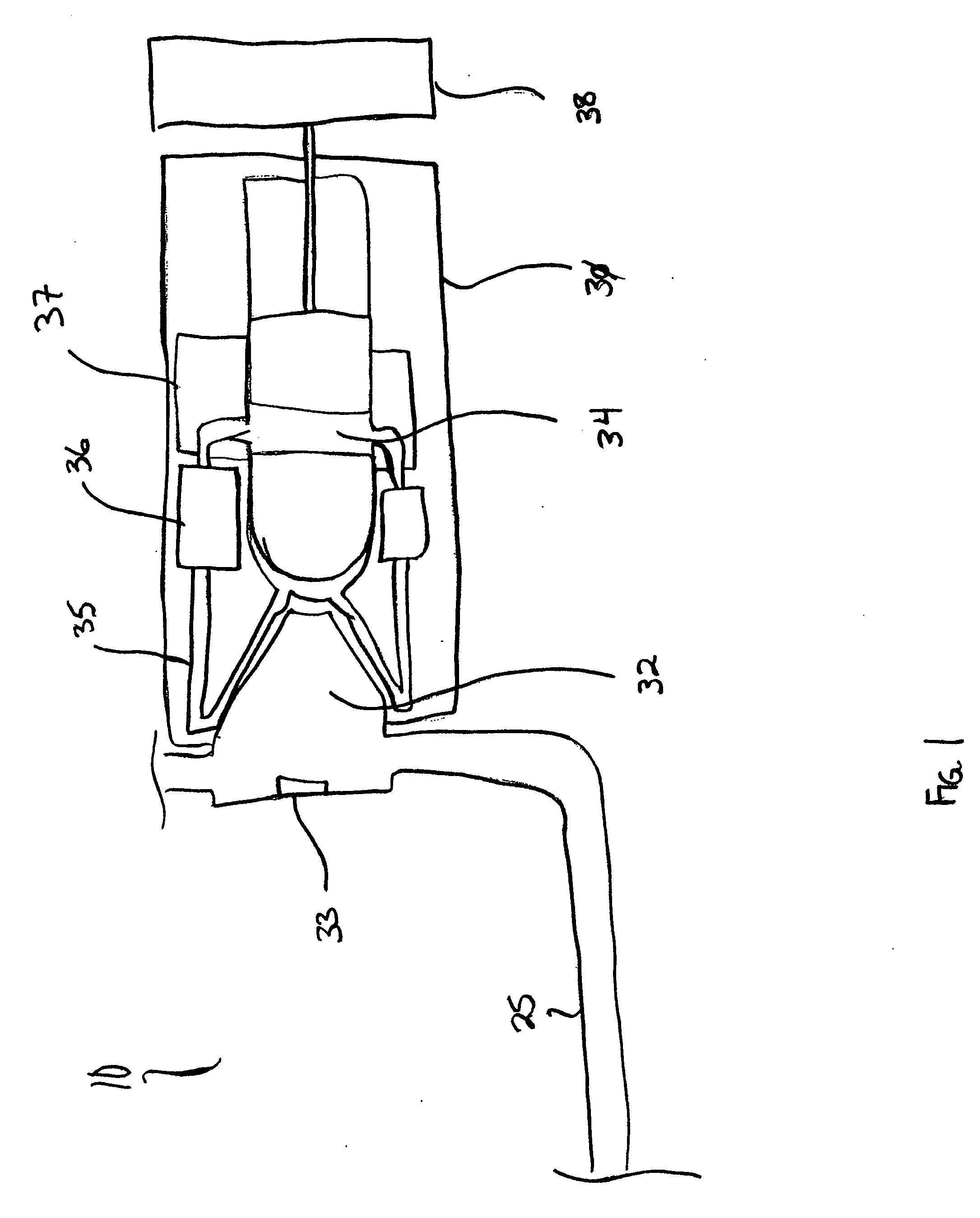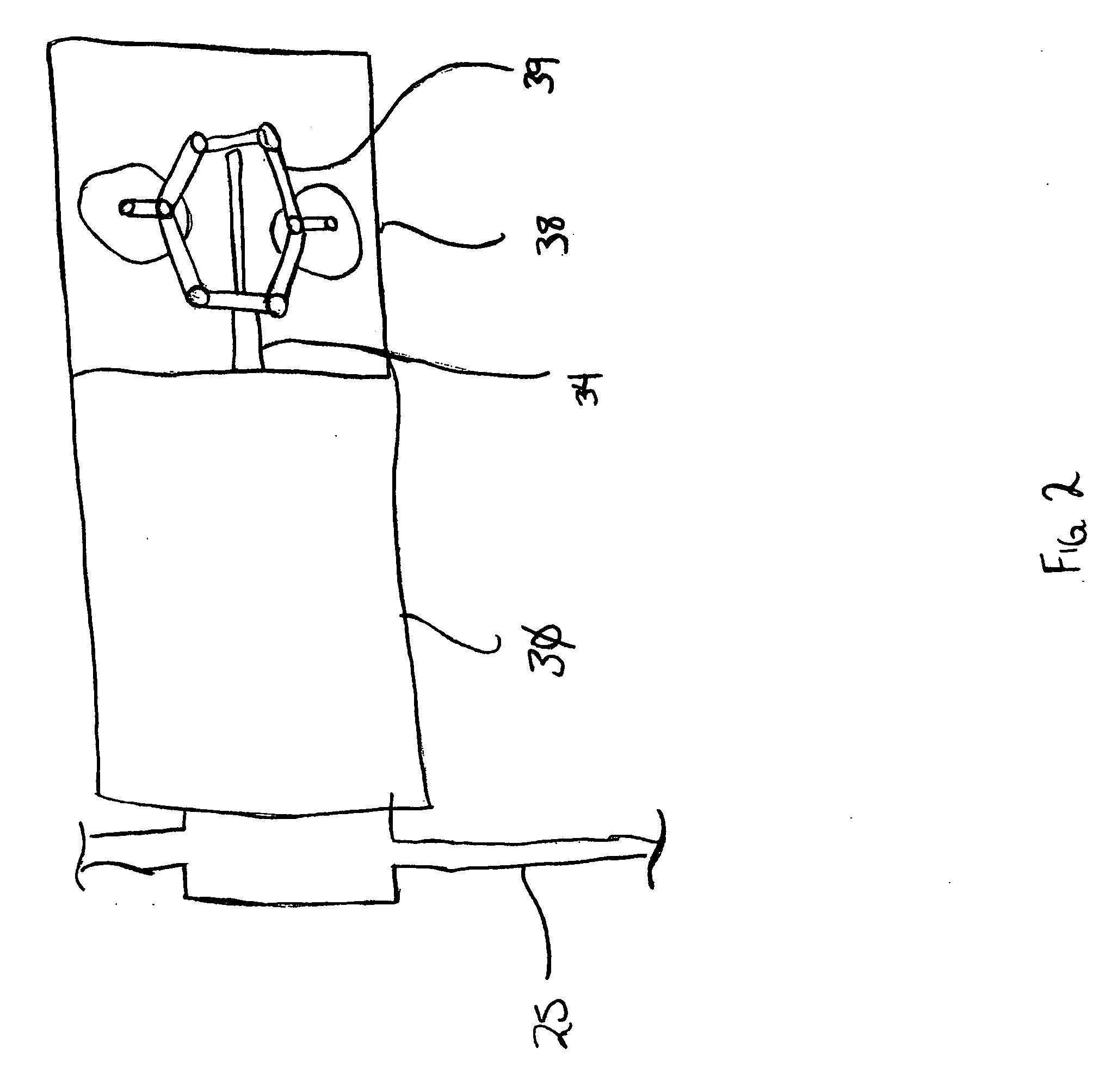Method and apparatus for disposal of well flare gas in oil and gas drilling and recovery operations
- Summary
- Abstract
- Description
- Claims
- Application Information
AI Technical Summary
Benefits of technology
Problems solved by technology
Method used
Image
Examples
Embodiment Construction
[0032]FIG. 1 is a schematic illustration of a system 10 for recovering energy from wellhead gas. The energy recovery system 10 comprises a gas conduit 25 and a stirling engine 30. The gas conduit 25 transfers raw wellhead gas, collected as a by-product from oil producing wells, from a wellhead 20 to the stirling engine 30.
[0033]The raw wellhead gas is collected from the top of the wellhead as is known in the art and typically comprises a mixture of methane, ethane, propane, nitrogen, carbon-dioxide, helium, and other compounds. In addition, the raw wellhead gas may contain small quantities of water vapor and / or significant amounts of hydrogen sulfide (H2S) making the wellhead gas “sour gas”. Typically, wellhead gas with a hydrogen sulfide content exceeding 5.7 milligrams per meter of gas is typically considered to he “sour gas”. The pressure of the raw wellhead gas collected from the wellhead is typically 2 psi or slightly higher allowing the raw wellhead gas to move through the gas...
PUM
 Login to View More
Login to View More Abstract
Description
Claims
Application Information
 Login to View More
Login to View More - R&D
- Intellectual Property
- Life Sciences
- Materials
- Tech Scout
- Unparalleled Data Quality
- Higher Quality Content
- 60% Fewer Hallucinations
Browse by: Latest US Patents, China's latest patents, Technical Efficacy Thesaurus, Application Domain, Technology Topic, Popular Technical Reports.
© 2025 PatSnap. All rights reserved.Legal|Privacy policy|Modern Slavery Act Transparency Statement|Sitemap|About US| Contact US: help@patsnap.com



